"Search Engine Journal" - 5 new articles
- Google Launches Gesture Search for Android 2.0 Phones
- Google Search Results Get the Star Treatment
- Penalties, Bans, and Paid Search
- Effective Blog Design Part 1
- Test and Analyze On-Page Links with LinkSidebar
- More Recent Articles
Google Launches Gesture Search for Android 2.0 Phones
Google announced a pretty cool feature that most of us Android phone users would surely find useful and innovative – gesture search. Basically, what this does is to free you of the task of typing your search terms. With gesture search, all you have to do is to draw alphabet gestures on your Android phones homescreen. Gesture search will then suggest search terms based on what you've drawn.
Gesture Search is a Google Labs application supporting all Android phones with version 2.0 or above, in the U.S. only. It lets you quickly find contacts, installed apps, a bookmark or a music track.
The different gestures that you can draw on your Android phones' touchscreen include – draw any letter, horizontal cross to erase a query, left to right for erasing an entire query and right to left for removing the last letter or space in the query.
In addition, Gesture Search also considers your search history and puts the last search query you've used to the top of the list the next time you perform another related gesture search.
To download Gesture Search, just visit the Android Market and search for it. But then again, it's good for U.S. Android phone users only. Hopefully, Google will make it available to other users worldwide.
Check out the SEO Tools guide at Search Engine Journal.
Google Launches Gesture Search for Android 2.0 Phones
Google Search Results Get the Star Treatment
Google's long-standing effort on making its search engine results pages more personalized continue with the roll out of a new feature – marking search results with cutesy, yellow star icons.
Actually, Stars are replacing the SearchWiki, which according to the Official Google blog didn't get to be appreciated by users especially since it changes the order of Google's organic search results. So, as an alternative way of marking and rediscovering web content provided by Google search results – marking them with Stars is a more lighweight and flexible solution.
To mark a search result with the star icon, you simply need to click the star marker. Once marked, the next time you do a search, all your previous starred items related to your current search will appear in a special list at the top of your results.
The Star feature syncs with Google Bookmarks and Google Toolbar. And while you are browsing the web, you can quickly click on the star icon to favorite a webpage and place it on the list of items that you have starred.
Google is rolling out the Star feature in search globally in the next few days.
Check out the SEO Tools guide at Search Engine Journal.
Google Search Results Get the Star Treatment

Penalties, Bans, and Paid Search
There are numerous posts on PPC vs SEO, who gets more money, and all that mumbo jumbo. To me, it's right up there with "SEO is dead" type posts, good for attention, but there should not be any versus in that relationship. (Note: Most of the more recent posts point out that both are beneficial) The two have more in common than both sides would care to admit sometimes.
One thing that they do have in common is the infamous and often feared Google ban/penalty. Yes, if you haven't heard yet, you can get penalties and banned from AdWords. The new Quality Score system has penalties built in that reflect in your quality score for a keyword. The lower your quality score, the more potential there is for higher costs and lower placements. That is the equivalent of a sudden drop in rankings.
When it comes to bans, it is actually harder to return from a ban in AdWords than being de-indexed on the organic side. This could change but for now if your account is banned, you cannot just make a new one, and there is no form to ask for re-inclusion after the issues are fixed. There are ways around this of course, but just like making a new website, on a new domain, on a new host using new information and all, it takes time to get the historical wonderfulness that might have existed before.
There has been nothing "official" on the AdWords Blog that I can see, but a WebmasterWorld thread did feature a response from AdWords Advisor – a long time Google AdWords employee and generally helpful person to the forum members at WebmasterWorld. The AdWords team acknowledged that bans were being put in place for those advertisers that were seemingly deceiving the end user.
How to Not Get Banned in AdWords
This is simple; follow the Quality Guidelines for account setup, ads, destination URLs, and landing pages. PPC Blog covers this as well. You want your quality score to be as high as possible for the best CPC and placement right? The same things apply here. Make sure you are providing quality and you will be fine.
This round of bans was seemingly targeted at affiliates. This does not mean that you cannot buy ads from Google as an affiliate. If you build a site that adds something for the end user to consume that is of value that the original seller does not provide, you are fine. However, if you build landing pages solely for the purpose of PPC and only action a user can take is to click through to the original seller's site via your affiliate link you are adding no additional benefit. Be a good affiliate and make your site something that people will want to return to.
What to do When You are Banned
If you think you have been unfairly banned from Google AdWords, your one option is to contact an AdWords Representative to request a review of your account.
My tip: You need to be sure you have done nothing wrong. Don't use other people's actions as a litmus test for your own actions. "But my competitor was doing it" is not a reason to give to Google when asking for re-inclusion on the organic side, and the same applies to asking for an account review on the AdWords side.
If you were cutting corners or violating the Quality Guidelines, cut your losses and find a new project. As of right now, you would have to start everything new, site, account, address, email, credit card, and more to get another account for the same project.
And if you go through all of that, pay attention to the quality guidelines, and add the AdWords blog to your RSS reader. Google changes their mind all the time, and it's best to keep up so that this never happens to your business.
The guest post is by Kate Morris. You can find her on her blog or on twitter @katemorris.
Check out the SEO Tools guide at Search Engine Journal.
Penalties, Bans, and Paid Search
Effective Blog Design Part 1
Blogs have almost become as ubiquitous as the internet itsself. With powerful CMS tools like Wordpress and Blogger it's never been easier to start a blog. In past articles I've spoken about the need to hire a professional web designer to get a great design or to rely on one of the thousands of free themes. However, whether you're designing a new blog yourself or you've hired a web designer this series is going to teach you what you need to know about your blog design
Why Your Blogs Design is so Important
With the increasing number of blogs out there it's easy to have your message diluted in the pool of similar content blogs. Trust me, what you're writing about is most likely being written about 10 times over. That's ok, but you need to stand out.
The quality of your content is going to rule over the blog realm, as they say, "Content is King". A King dressed in a fine robe and crown not dishambled in rags. Every web designer knows that you have about 3 seconds to convince a new user that your site is worth paying attention too. As much as I'm an advocate for great content above all else, no one can read enough of your article to keep them interested in 3 seconds. Which is why you have to implement some strategies and make use of the tools that come with a blog so that a user will be happy and stay or return to your site.
This Isn't A Blogging Strategy ArticleI'm not discussing blogging strategies today, I'm going to leave that to the experts:
The above individuals are fantastic bloggers and some even blog on blogging. However many if not all haven't designed their own blogs. They most definitely know the rules of blog design, though.
What Do I Have In My Arsenal?
If you're using a cms like Wordpress you have a lot. None so powerful as the RSS Feed. A new user to your site may be there for several reasons but there are two that are most likely.The user is researching something and found your site through google (or other search engine) or somehow they were recommend to your site either through word of mouth or other form of url sharing.
The point is that you have an opportunity to take someone who has stumbled across your site and turn them into a subscribed user. The easiest way to do this is with a prominent RSS icon that when clicked offers several options for subscription, the easiest way to do this is with Feedburner. Take a look at Geek & Hype they are definitely doing it right.
The next vital element is url sharing tools. It's very likely that someone found your article from a social media network like Facebook or Twitter which means that user has an account and can help spread your site to other users. There are tons of free social icons and plugins out there that help with sharing. However my experience is that less is more. In the past I used to put every social network icon on a blog which was actually hurting the design of the site. Either it seemed too cluttered or I had to hide the icons and wait for a user to click on a button to show them.
What I found is that all you have to do is choose a few larger networks. Facebook has 175,000,000 users and is growing by over 500,000 users a day. It's likely that your user is on facebook, which offers a great link sharing tool that's inserted in it's users feed. Twitter is growing in popularity as well, and it inherently works very well at sharing links.
The other factor is that most people won't share the article on more than one network, so don't bother over cluttering your design. SEJ is a great example of this. At the top of this article you'll see a Sphinn logo and a retweet icon. Instead of adding a dozen or more networks an SEJ user has two very effective choices they can make.
Don't give your users too many choices, it can frustrate or confuse them. It's important to offer them the tools they need to help you share your blog or article but we want to have a great mix of being subtle and obvious.
These were just two examples of techniques you can implement to optimize the design of your blog. I am going to add a few more articles to this Blog Design series and focus on a lot more specific aspects of design elements and strategies. Let me know your thoughts on this article and what you'd like to read in the next below. In the meantime take a look at Design Meltdowns list of "Beautiful Blogs" for more examples.
Check out the SEO Tools guide at Search Engine Journal.
Effective Blog Design Part 1
Test and Analyze On-Page Links with LinkSidebar
LinkSidebar is a useful FireFox addon that allows to view, search and test hyperlinks in a web page.
Let's give it a test drive, shall we?
It took me a few minutes to figure out how to actually open the sidebar after the installation. It turned out I should have used the shortcut key [Ctrl+Shift+L] or the view menu (View->Sidebar->Links).
LinkSidebar allows the user to:
- See all hyperlinks in the current web page, including any hyperlinks inside frames;
- See the total number of hyperlinks in the current webpage.
Clicking on each link in the sidebar will open the page in a new tab.
You can customize the columns to show the anchor text of each link, its URL and domain:
You can search a handy SEARCH option to filter on-page links by a keyword:
Two handy advanced search operators are supported:
- You can use quotes to find the exact phrase.
- You can use a minus (-) sign before any word to exclude links containing that word from the results.
For example, to search for all the links to youtube videos except videos of cats, type "youtube -cats" in the search box.
Further on, you can select links in the list (to select many links hold CTRL and click the links you want to select) to be able to:
- Highlight them on the page;
- Test them:
To summarize, the addon allows to:
- Search the links in the current webpage (to find / filter links by a keyword in the URL path and anchor text);
- Select multiple links to open in tabs or copy locations for all selected links;
- Test links in the webpage, filtering out unwanted links with quick and easy searches;
- Highlight selected link on a page.
Check out the SEO Tools guide at Search Engine Journal.
Test and Analyze On-Page Links with LinkSidebar
More Recent Articles


Your requested content delivery powered by FeedBlitz, LLC, 9 Thoreau Way, Sudbury, MA 01776, USA. +1.978.776.9498
jueves, 4 de marzo de 2010
Suscribirse a:
Enviar comentarios (Atom)
Seguidores
Archivo del blog
-
▼
2010
(127)
- ► septiembre (7)
-
▼
marzo
(36)
- <!-- AOL_MESSAGE --><!-- Your FeedBlitz Updates ...
- <!-- AOL_MESSAGE --><!-- Your FeedBlitz Updates ...
- <!-- AOL_MESSAGE --><!-- Your FeedBlitz Updates ...
- <!-- Centro de Información WPERU --><!-- ...
- <!-- AOL_MESSAGE --><!-- Your FeedBlitz Updates ...
- <!-- AOL_MESSAGE --><!-- Your FeedBlitz Updates ...
- <!-- AOL_MESSAGE --><!-- Your FeedBlitz Updates ...
- Del iPhone al iPad
- <!-- AOL_MESSAGE --><!-- Your FeedBlitz Updates ...
- <!-- AOL_MESSAGE --><!-- Your FeedBlitz Updates ...
- Best-ever Freeware"
- <!-- AOL_MESSAGE --><!-- Your FeedBlitz Updates ...
- <!-- AOL_MESSAGE --><!-- Your FeedBlitz Updates ...
- <!-- AOL_MESSAGE --><!-- Your FeedBlitz Updates ...
- <!-- Carrero» , Carrero. David Carrero y Jaime C...
- <!-- AOL_MESSAGE --><!-- Your FeedBlitz Updates ...
- <!-- AOL_MESSAGE --><!-- Your FeedBlitz Updates ...
- - 10 new articles
- <!-- AOL_MESSAGE --><!-- Your FeedBlitz Updates ...
- <!-- Carrero» , Carrero. David Carrero y Jaime C...
- <!-- Blog de informatica --><!-- ...
- <!-- AOL_MESSAGE --><!-- Your FeedBlitz Updates ...
- <!-- AOL_MESSAGE --><!-- Your FeedBlitz Updates ...
- <!-- AOL_MESSAGE --><!-- Your FeedBlitz Updates ...
- A Time and Season for Search: How Data Mining Can...
- <!-- Carrero» , Carrero. David Carrero y Jaime C...
- <!-- Carrero» , Carrero. David Carrero y Jaime C...
- <!-- Carrero» , Carrero. David Carrero y Jaime C...
- Watch the 2010 Oscars : Academy Awards Online
- Google Buys Online Collaboration Operator DocVerse
- <!-- AOL_MESSAGE --><!-- Your FeedBlitz Updates ...
- <!-- Carrero» , Carrero. David Carrero y Jaime C...
- <!-- Carrero» , Carrero. David Carrero y Jaime C...
- <!-- AOL_MESSAGE --><!-- Your FeedBlitz Updates ...
- Twitter Newsletter 2010 - Edition #1
- <!-- AOL_MESSAGE --><!-- Your FeedBlitz Updates ...


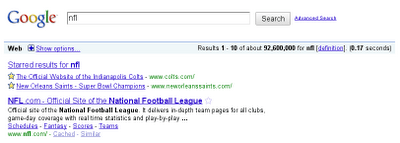
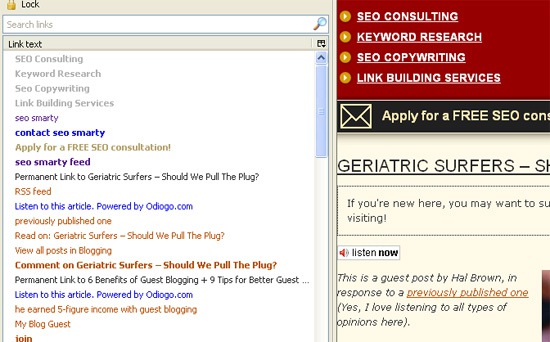
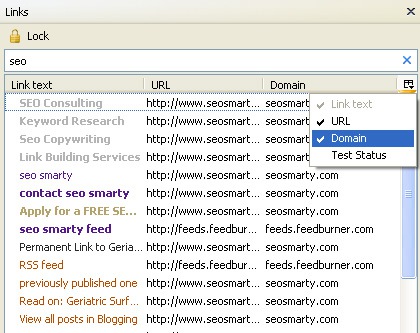
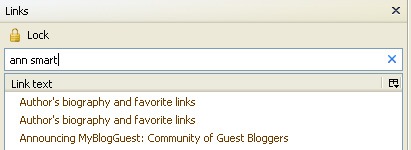
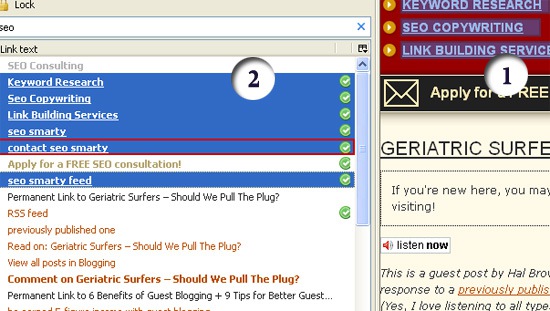
No hay comentarios:
Publicar un comentario